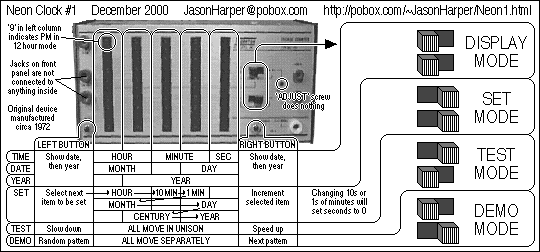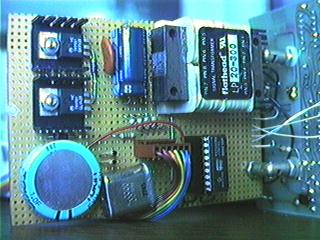This clock is based on one of the earliest electronic numeric display technologies, in which each digit is represented by a column of ten labelled lights, one of which is lit at any given time. It's hard to give an exact chronology for this particular technology, since there doesn't seem to be a single recognized name for it, but it seems to have been most popular in the early 1950s, and was quickly replaced with Nixie tubes when they were introduced. However, this technology lingered in use for at least 20 years, perhaps due to its relatively low cost: the piece of electronic lab equipment I adapted to make this clock, a Thornton Associates DEC-101 Decade Counter, was built in 1972.
To the right is a close-up of the rightmost three digits of the clock, showing a time of 20 minutes and 37 seconds past the hour. Since the device only has a five-digit display, I combine the tens and ones of seconds into a single column. The clock is about 8" wide, 4" high, and 3.5" deep. The enclosure is brushed, extruded aluminum, with black aluminum end plates. It is designed to sit on a shelf or desktop, there is no provision for hanging it on the wall. The power cord is 5 feet long, and requires a 3-prong outlet. The controls and connectors on the front have been left with their original labelling, so it isn't immediately obvious that this is a clock at all. The clock has a backup capacitor which will maintain timekeeping (at some loss in accuracy) for 10 to 30 minutes, in case of power failure or simply moving the clock to a different outlet. The clock's datekeeping ability is Y2K compliant, and is valid through the year 9999.






